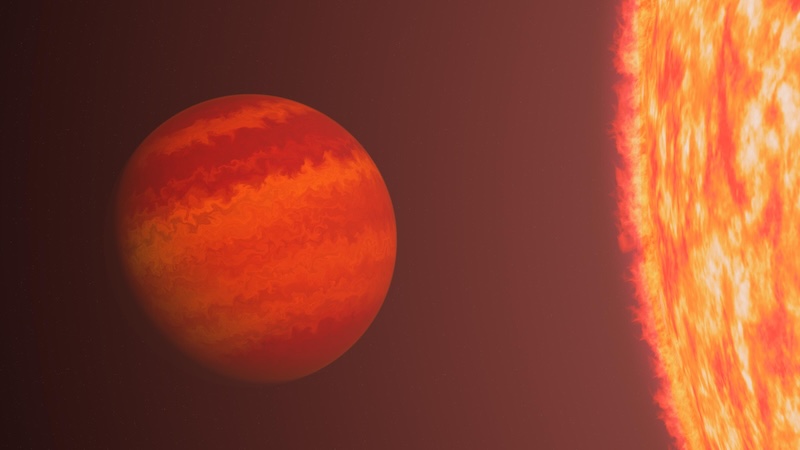Researchers have detected microplastics in the body of one of Earth's most isolated animals—a tiny creature living on a remote Antarctic island.
The authors of the study say the finding demonstrates plastics have entered the terrestrial food chain in this region—something that was previously unknown.
The latest paper—published in the journal Royal Society Biology Letters—focuses on a large piece of polystyrene foam found four years ago in an ice-free area on the shores of King George Island, located around 75 miles off the Antarctic coast in the Southern Ocean.
This piece of plastic was covered in algae, moss and lichens, which provide food for a small, insect-like invertebrates known as Cryptopygus antarcticus—a species of springtail (collembolan) found in Antarctica and Australia.
C. antarcticus, which measures just 0.04–0.08 inches in length and weighs only a few micrograms, has adapted to the extreme Antarctic conditions and forms a key part of the terrestrial food webs in this region.
The scientists analyzed the collembolans they found on the plastic foam using an imaging technique known as infrared spectroscopy. This revealed the presence of tiny polystyrene fragments measuring less than 100 micrometers across—about the same width as human hair—in the intestine of the invertebrate, suggesting they had been ingesting tiny fragments of the foam.
This is significant because it is the first field-based evidence that microplastics have contaminated Antarctic terrestrial animals, entering the food chain in one of the most remote parts of the planet.
The results are particularly relevant because scientists previously did not know if collembolans could ingest plastic particles. This group of animals, which reach very high densities in the soil, can be found all over the planet, and the study suggest that they may play an important role in the transport of plastic debris in soils, Elisa Bergami, lead author of the study from the Department of Physical, Earth and Environmental Sciences
University of Siena, in Italy, told Newsweek.
The microplastics pose potential risks to the collembolans themselves. Previous research on other springtail species around the world indicate that exposure to these tiny particles can lead to alterations in their growth and reproduction.
The microplastics can also make their way up the Antarctic food chain, as the springtails are eaten by larger creatures, who in turn are preyed upon by other animals, and so on. This means microplastics may accumulate higher up the food chain, with potential risks for the entire ecosystem.

While there is some research looking into the impacts of microplastic ingestion for animals in the marine environment at least, the results have been mixed and there is still much scientists don't know about the potential implications for ecosystems and the environment—especially given that microplastics can transport contaminants and pathogens.
Plastic pollution is ubiquitous in the modern world, with tiny fragments being documented in virtually every ecosystem on Earth, from deep areas of the oceans to the tops of mountains.
Despite this, most research in this field has focused on aquatic environments, with contamination on land—for example, in soils of terrestrial food chains—being largely overlooked. While large pieces of plastic were documented in Antarctica as far back as the 1980s, and scientists had identified microplastics in the region more recently, whether or not the substances were able to enter terrestrial food webs on the southern continent long remained a mystery.
"Knowledge about plastic contamination in terrestrial environments and related food webs is still very limited, compared to what we know for the marine environment," Bergami said. "This study tells us that more research is needed to understand the real extent of plastic contamination in the terrestrial environment. We added a piece to the puzzle, but the whole picture is much more complex."
Alan Jamieson, a senior lecturer in Marine Ecology at Newcastle University in the U.K. who was not involved in the latest study, told Newsweek: "This is another worrying find in a long list of worrying finds that show the extent of plastic pollution on our planet."
"These ever more remote and extreme environments that are found polluted is concerning as they often represent the ecosystems we know the least. This study is showing polystyrene ingestion by a species central to the terrestrial food web of Antarctica. The next big question is: what exactly is it doing to these species?"
Earlier this year, Jamieson and colleagues published a study in the journal Zootaxa describing a new species of marine crustacean, found in the deepest ocean trench on Earth (the Mariana Trench), found to have microplastics in its gut.
The scientists decided to name the new creatures Eurythenes plasticus to highlight the extent of the plastic crisis. E. plasticus and C. antarcticus are now two of around 250 known species that have been documented ingesting plastic.

"We have new species turning up that are already contaminated and so we have missed the window to understand these species in a natural environment," Jamieson previously told Newsweek.
"[This discovery] exemplifies the extent of the plastic problem. Species in remote and extreme marine environments are suffering as a result of human activity. Any detrimental effects on large populations are hard to grasp in new species as we didn't know what these populations were like prior to contamination.
Meanwhile, Richard Gross, from the Department of Chemistry and Biology at Rensselaer Polytechnic Institute, who was also not involved in the latest research, said the Biology Letters study does not give an idea of the extent to which plastics have entered into the Antarctic collembolan community.
He told Newsweek that while the authors show that, in at least one Cryptopygus antarcticus organism, polystyrene was ingested and remains present within the organism, the paper does not provide information on the numerical distribution of these organisms that have ingested polystyrene.
"In my opinion, the authors describe a finding that is not impactful," he said. "Information on the presence of polystyrene in a larger sampling of collembolan Cryptopygus antarcticus both at the site of the polystyrene debris and distances away from the debris would be more meaningful. An isolated finding as that reported by the author does not provide context for understanding the breadth of a potential health problem in the Antarctic terrestrial food web."
This article was updated to include comments from Elisa Bergami.
Uncommon Knowledge
Newsweek is committed to challenging conventional wisdom and finding connections in the search for common ground.
Newsweek is committed to challenging conventional wisdom and finding connections in the search for common ground.
About the writer
Aristos is a Newsweek science reporter with the London, U.K., bureau. He reports on science and health topics, including; animal, ... Read more





